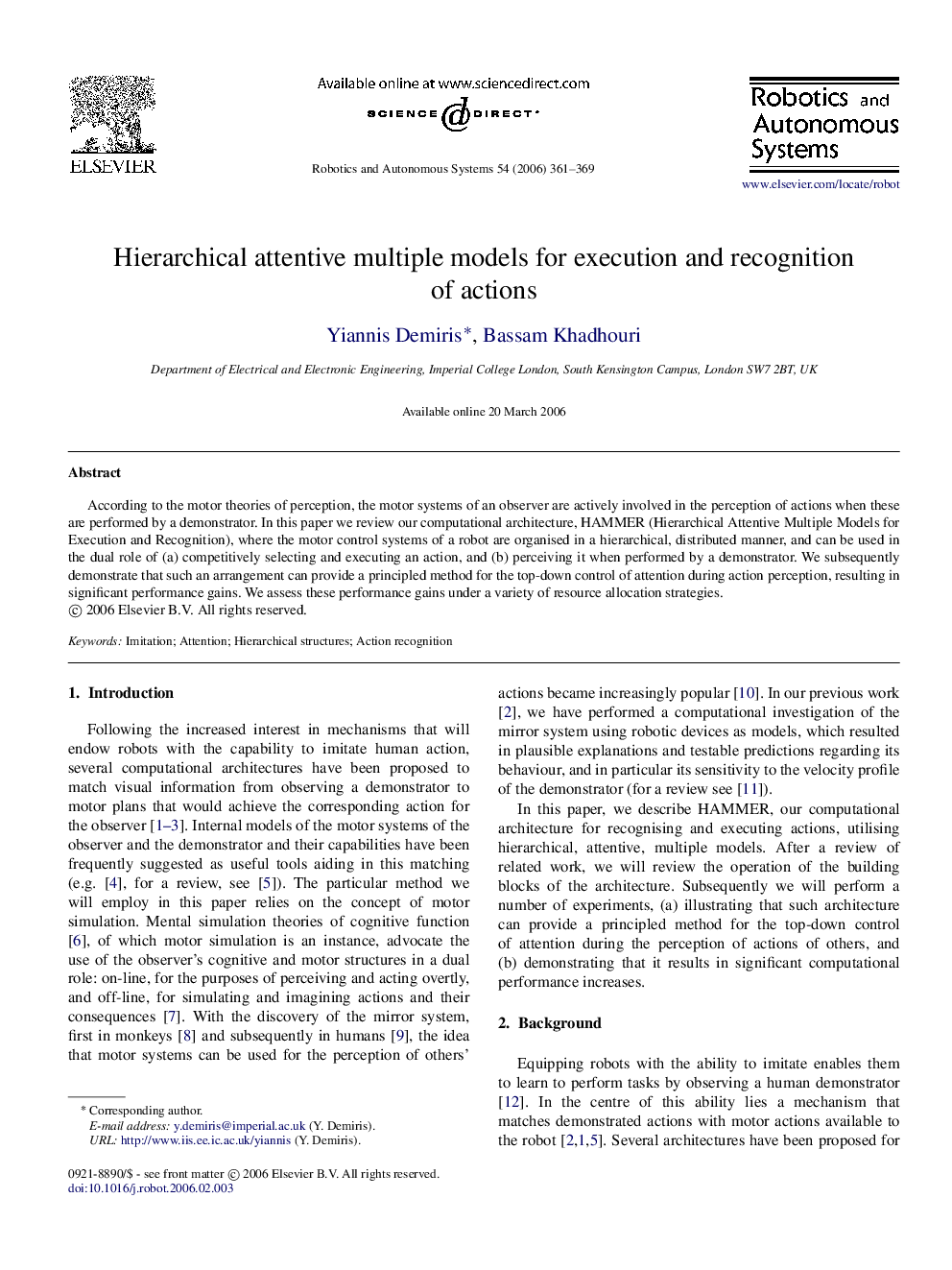| Article ID | Journal | Published Year | Pages | File Type |
|---|---|---|---|---|
| 413274 | Robotics and Autonomous Systems | 2006 | 9 Pages |
According to the motor theories of perception, the motor systems of an observer are actively involved in the perception of actions when these are performed by a demonstrator. In this paper we review our computational architecture, HAMMER (Hierarchical Attentive Multiple Models for Execution and Recognition), where the motor control systems of a robot are organised in a hierarchical, distributed manner, and can be used in the dual role of (a) competitively selecting and executing an action, and (b) perceiving it when performed by a demonstrator. We subsequently demonstrate that such an arrangement can provide a principled method for the top-down control of attention during action perception, resulting in significant performance gains. We assess these performance gains under a variety of resource allocation strategies.
